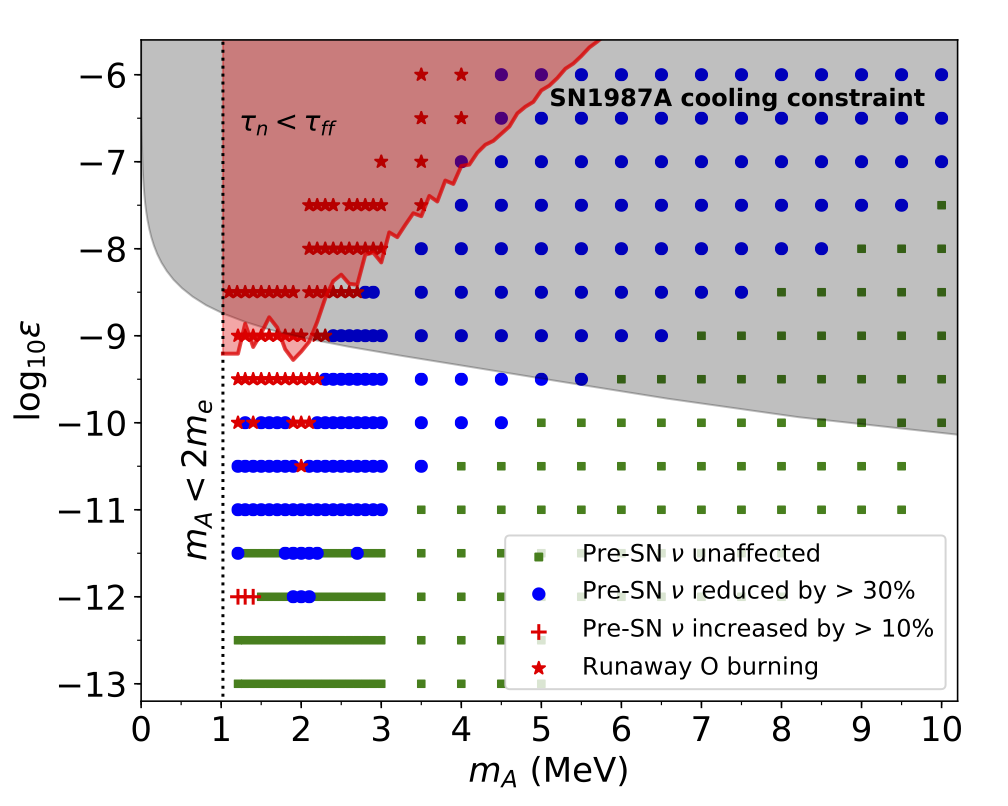Studying the Impact of Dark Photon Emission on Massive Star Evolution
Dark matter represents more than 80% of the matter density of the universe and remains one of the biggest mysteries in physics. In many models currently under investigation, it could be part of a dark sector which weakly interacts with Standard Model particles via a mediator.
Astrophysical probes can greatly extend the reach of the search for dark matter candidates, trading the precision associated with the controlled environment of a laboratory for the vast range of densities and temperatures of stars.
As detector technology is being continuously improved, a nearby supernova explosion has the potential to provide us with a plethora of information through the neutrino signal even before the stellar collapse happens. The presence and production of dark matter in the star could leave its mark on this signal.
In this work, we study the effects of additional cooling due to the emission of a dark matter candidate particle, the dark photon, on the final phases of the evolution of a 15 solar mass star and the resulting modifications of the pre-supernova neutrino signal.
For a substantial portion of the dark photon parameter space, the extra cooling speeds up silicon burning, which results in a reduced number of neutrinos emitted during the last day before core collapse. This reduction can be described by a systematic acceleration of the relevant timescales and the results can be estimated semi-analytically in good agreement with the numerical simulations.

Outside the semi-analytic regime we find more complicated effects. In a narrow parameter range, low-mass dark photons lead to an increase of the number of emitted neutrinos because of additional shell burning episodes that delay core collapse. Furthermore,relatively strong couplings produce a thermonuclear runaway during oxygen burning, which could result in a complete disruption of the star but requires more detailed simulations to determine the outcome. Our results show that pre-supernova neutrino signals are a potential probe of the dark photon parameter space.

This introduction was prepared by N3AS fellow Ermal Rrapaj. Credit for header image: ALMA (ESO/NAOJ/NRAO)/A. Angelich. Visible light image: the NASA/ESA Hubble Space Telescope. X-Ray image: The NASA Chandra X-Ray Observatory.
Read More:

